Introduction
The black-backed (aka silver-backed) jackal (Canis mesomelas) is a small fox-like omnivorous scavenger found across East Africa and South Africa.1https://www.canids.org/species/view/PREKN8360151 Jackals are still unjustifiably maligned, mainly due to a film, The Day of the Jackal that gave the villain his codename. Even today, ‘jackal’ still evokes false stereotypes of these wonderful animals being sly or ‘dishonest’, when in fact, jackals are social and co-operative, and with their family brave, loyal and kind.
In Uganda, the black-backed jackal can only be found in and around Kidepo National Park and Pian Upe Wildlife Reserve. Their close relative, the side-striped jackal (Canis adustus), is more common and can be found in all of Uganda’s savannah national parks as well as the mountainous Bwindi Impenetrable Forest and Mgahinga National Park.2https://hereinuganda.com/jackals Because of their adaptability and opportunistic lifestyle, black-backed jackals are not endangered and are widespread across Africa.
Fascinating facts
Lifelong lovers
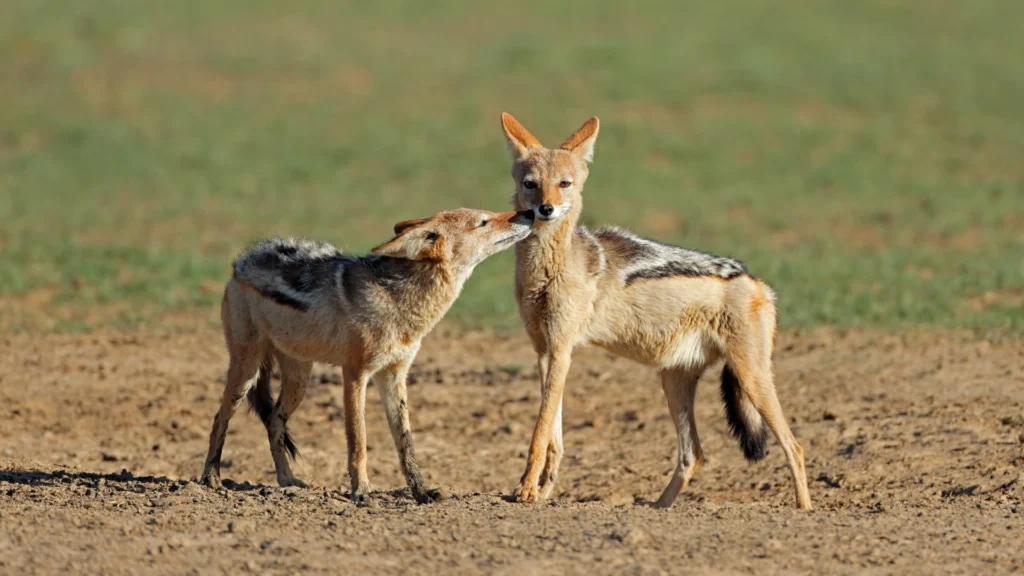
Black-backed jackals are monogamous and form a lifelong bond with their mate. Together the pair will find a territory, mark it with their scent and defend it from intruders. Black-backed jackals live between eight and 14 years in the wild.
Pups on the move
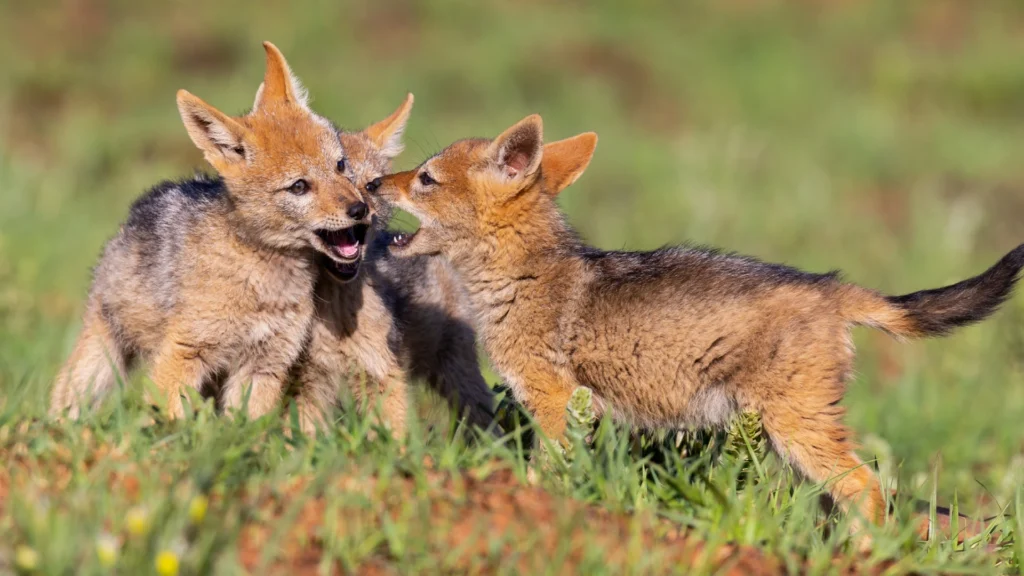
A mother jackal gives birth to between two to four pups once a year. They spend the first few weeks of their life underground in their den before coming up to play. Every two weeks the mother will relocate the pups to a new home so that predators don’t learn where they are.2https://hereinuganda.com/jackals
Mum and dad’s a team
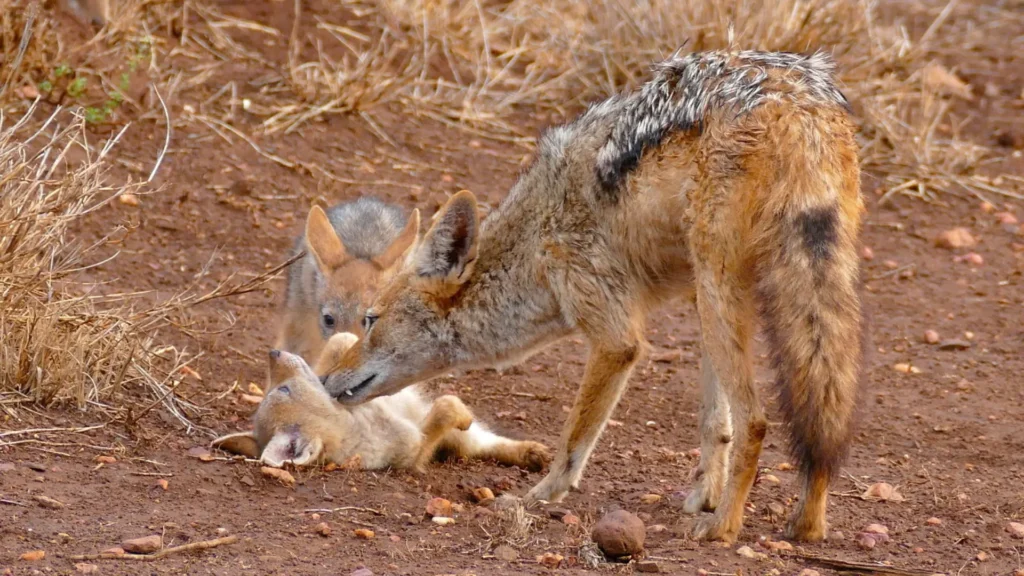
Male jackals help find food for their pregnant mate; and when she gives birth will feed her for about three weeks in the den. The female will lick the male’s muzzle, prompting him to regurgitate food. This means the female can stay with her pups and nurse them regularly.3https://www.discoverwildlife.com/animal-facts/mammals/black-backed-jackals-why-family-matters
Young jackals help out with the new family
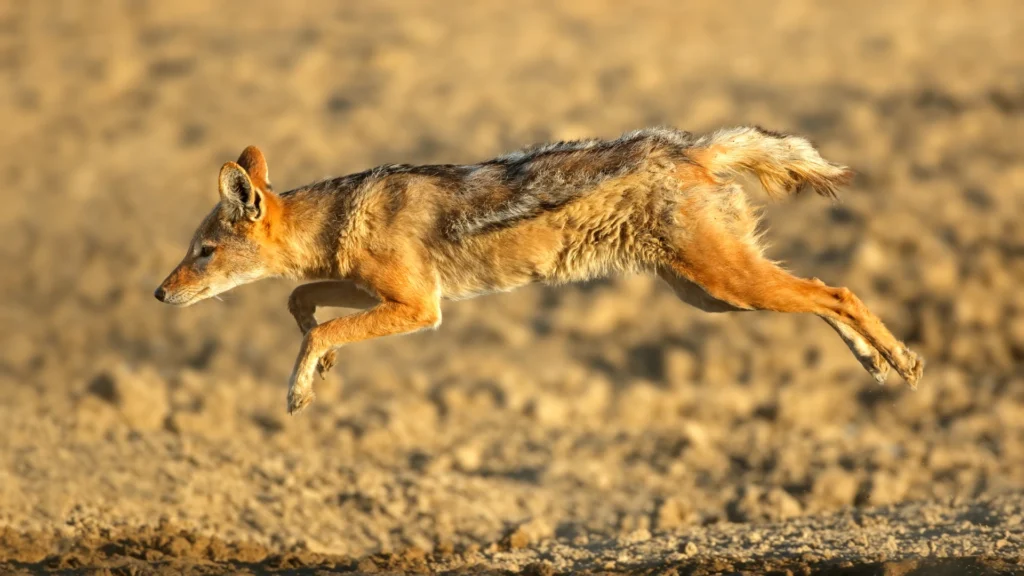
Another reason black-backed jackals are so successful at raising families is because young jackals stick around for a year before going to find their own mate so that they can help their parents with their new litter of pups.4https://www.primeugandasafaris.com/black-backed-jackal-mammal-unique-dish-licker-uganda/ The young adult helpers provide food to their lactating mother and to the young pups when they leave the den, and chase off hyenas or other predators that come too close for comfort.3https://www.discoverwildlife.com/animal-facts/mammals/black-backed-jackals-why-family-matters
Black-backed jackals are not fussy eaters
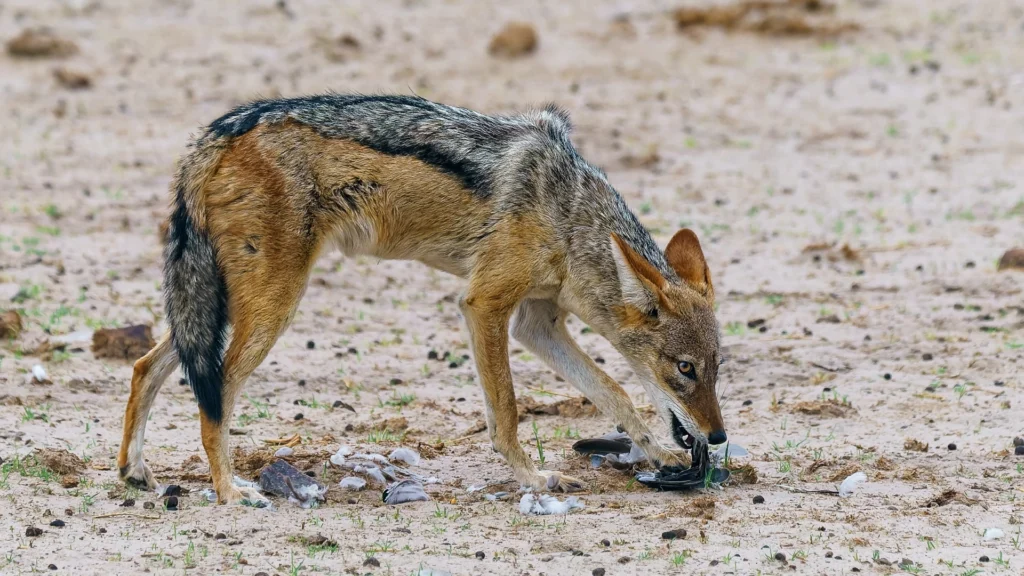
Just like foxes, jackals are opportunistic scavengers and will eat anything they can fit in their mouth. This might include cleaning up an old carcass, munching on fruit fallen from a tree or pulling up bulbs from the ground.5https://destinationuganda.com/animals/jackal/ They’ll also hunt small mammals, insects and birds.
Black-backed jackals are prehistoric

Fossil records have revealed that the black-backed jackal is one of the oldest dog species, dating back 2.5 million years. Because it is so great at adapting and surviving in any environment, it hasn’t needed to change much in all that time.
Black-backed jackals love to talk
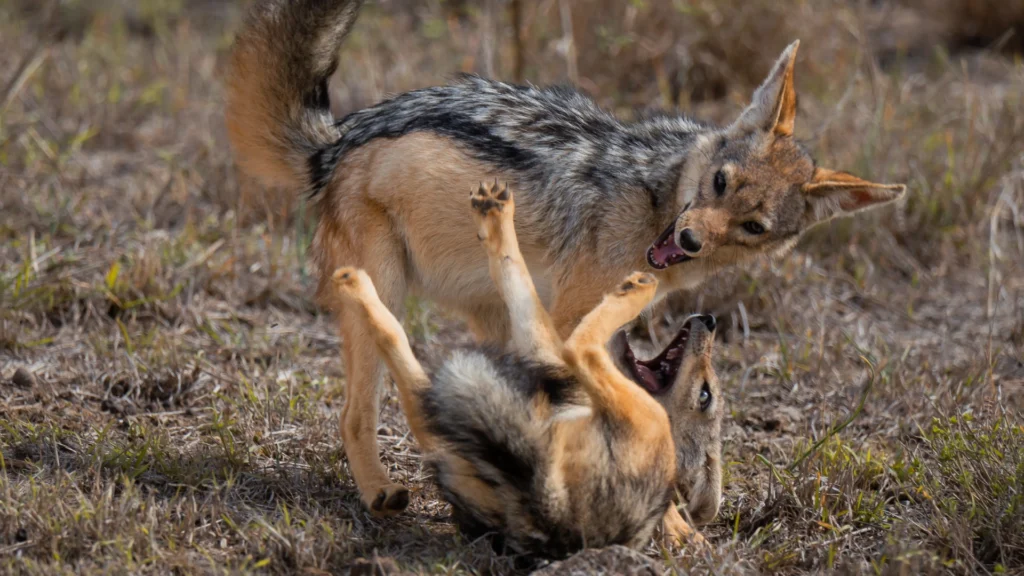
Jackals make a lot of high-pitched calls and will begin a new call while the first one is still being answered.6https://wildambience.com/wildlife-sounds/black-backed-jackal/ This creates a wailing vocal chorus that is reminiscent of wolves – and jackals also throw their heads back as they talk to each other. Apparently, the howling can irritate lions and leopards. Lions have been known to roar back at a jackal call – perhaps telling them to be quiet!
Threats to black-backed jackals
Human-wildlife conflict
Jackals don’t face many threats because they are so adaptable and successful at reproducing but, unsurprisingly, the threats they do face come from humans. Much like the fox’s relationship to farmers in Britain, jackals are seen as vermin that pose a threat to livestock. Unfortunately, jackals are also a carrier of rabies and can transmit it to farmed and other domesticated animals. Because of this, local culling has taken place but has been shown to be ineffective at controlling the disease. Instead, vaccination programs should be used to immunise jackals and domesticated animals.1https://www.canids.org/species/view/PREKN8360151
Habitat loss

As a result of Uganda’s population growth, increased urbanisation, and an increased income for wealthier Ugandans, the demand for animal products is likely to dramatically rise in the coming years. The FAO estimates that by 2050, the demand for meat and milk products in Uganda will more than double and “the production of all types of meat and that of milk will increase by 164 and 41 per cent, respectively.”7https://www.fao.org/3/ca7009en/CA7009EN.pdf
To produce these animal products, land that was once beautiful and iconic savannah and forest – and a home to Uganda’s majestic wildlife – will be turned into farmland. The conversion of land to agriculture will strip the wildlife of its natural habitat and put increasing pressure upon the land to support life. In the last 100 years, Uganda has lost 42 per cent of its forest cover, decreasing from 54 per cent to 12 per cent in 2017.8https://illuminem.com/illuminemvoices/deforestation-in-uganda-causes-and-recommendations Encroachment into Queen Elizabeth National Park by illegal cattle ranchers is common9https://conbio.onlinelibrary.wiley.com/doi/abs/10.1111/cobi.12538?campaign=woletoc and the National State of the Environment Report for Uganda 2014, attributes this to “the increasing demand of land for agriculture and fuel wood by the rapidly increasing population growth.”10https://nema.go.ug/sites/all/themes/nema/docs/FINAL%20NSOER%202014.pdf
Of course, a growing population needs food but it would be much more sustainable to meet these needs through the growing of crops instead of farming animals. Animal foods require by far the most land and resources – this is because land is not only used for grazing but also for growing food for the animals. The more animal-based foods we eat, the more endangered our forests become. However, crops are a far more efficient way to feed the growing population and use less land and other natural resources. A vegan diet is associated with only half the cropland demand, grazing intensity, and overall biomass harvest of meat-based diets11https://www.nature.com/articles/ncomms11382 so switching to a vegan diet would have a phenomenal impact on reducing deforestation and land degradation in Uganda.
References
References
- 1
- 2
- 3
- 4
- 5
- 6
- 7
- 8
- 9
- 10
- 11

